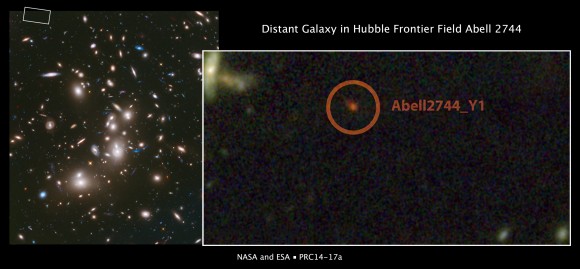| Online: | |
| Visits: | |
| Stories: |

| Story Views | |
| Now: | |
| Last Hour: | |
| Last 24 Hours: | |
| Total: | |
Found! Distant Galaxy Spotted Just 650 Million Years After Big Bang

Hubble Space Telescope deep image of galaxy cluster Abell 2744. Credit: NASA, ESA, J. Lotz, M. Mountain, A. Koekemoer, and the HFF Team (STScI), and N. Laporte (Instituto de Astrofisica de Canarias)
Peering deep into the universe with the Hubble Space Telescope, a team of researchers have found an extremely distant galaxy. It was discovered in Abell 2744, a galaxy cluster. The galaxy (called Abell2744_Y1) was spotted at a time when it was just 650 million years after the universe-forming Big Bang (which makes it more than 13 billion years old).
This demonstrates the potential of a relatively new project, researchers said, called “Hubble Frontier Fields.” It’s part of an effort where Hubble and fellow NASA space telescopes Spitzer and the Chandra X-ray Observatory will examine six galaxy clusters that bend the light from more distant objects in the background. By doing this, researchers hope to learn more about galaxies formed in the universe’s first billion years.
(…)
Read the rest of Found! Distant Galaxy Spotted Just 650 Million Years After Big Bang (126 words)
© Elizabeth Howell for Universe Today, 2014. |
Permalink |
No comment |
Post tags: abell2744, Abell2744_Y1, Chandra X-ray Observatory, galaxy cluster, Spitzer Space Telescope
Feed enhanced by Better Feed from Ozh
Source: http://www.universetoday.com/109216/found-distant-galaxy-spotted-just-650-million-years-after-big-bang/



